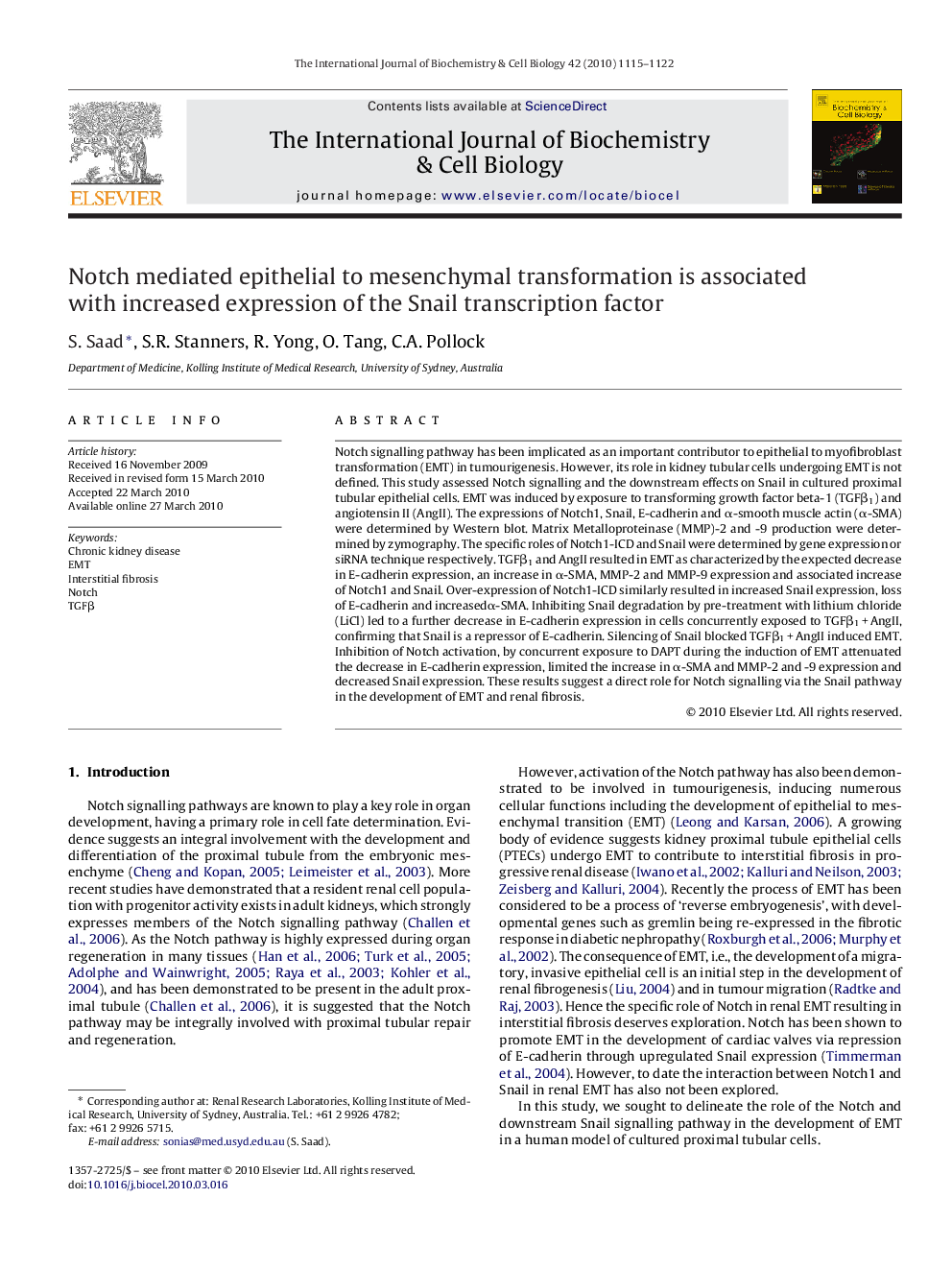| Article ID | Journal | Published Year | Pages | File Type |
|---|---|---|---|---|
| 1984427 | The International Journal of Biochemistry & Cell Biology | 2010 | 8 Pages |
Notch signalling pathway has been implicated as an important contributor to epithelial to myofibroblast transformation (EMT) in tumourigenesis. However, its role in kidney tubular cells undergoing EMT is not defined. This study assessed Notch signalling and the downstream effects on Snail in cultured proximal tubular epithelial cells. EMT was induced by exposure to transforming growth factor beta-1 (TGFβ1) and angiotensin II (AngII). The expressions of Notch1, Snail, E-cadherin and α-smooth muscle actin (α-SMA) were determined by Western blot. Matrix Metalloproteinase (MMP)-2 and -9 production were determined by zymography. The specific roles of Notch1-ICD and Snail were determined by gene expression or siRNA technique respectively. TGFβ1 and AngII resulted in EMT as characterized by the expected decrease in E-cadherin expression, an increase in α-SMA, MMP-2 and MMP-9 expression and associated increase of Notch1 and Snail. Over-expression of Notch1-ICD similarly resulted in increased Snail expression, loss of E-cadherin and increasedα-SMA. Inhibiting Snail degradation by pre-treatment with lithium chloride (LiCl) led to a further decrease in E-cadherin expression in cells concurrently exposed to TGFβ1 + AngII, confirming that Snail is a repressor of E-cadherin. Silencing of Snail blocked TGFβ1 + AngII induced EMT. Inhibition of Notch activation, by concurrent exposure to DAPT during the induction of EMT attenuated the decrease in E-cadherin expression, limited the increase in α-SMA and MMP-2 and -9 expression and decreased Snail expression. These results suggest a direct role for Notch signalling via the Snail pathway in the development of EMT and renal fibrosis.
